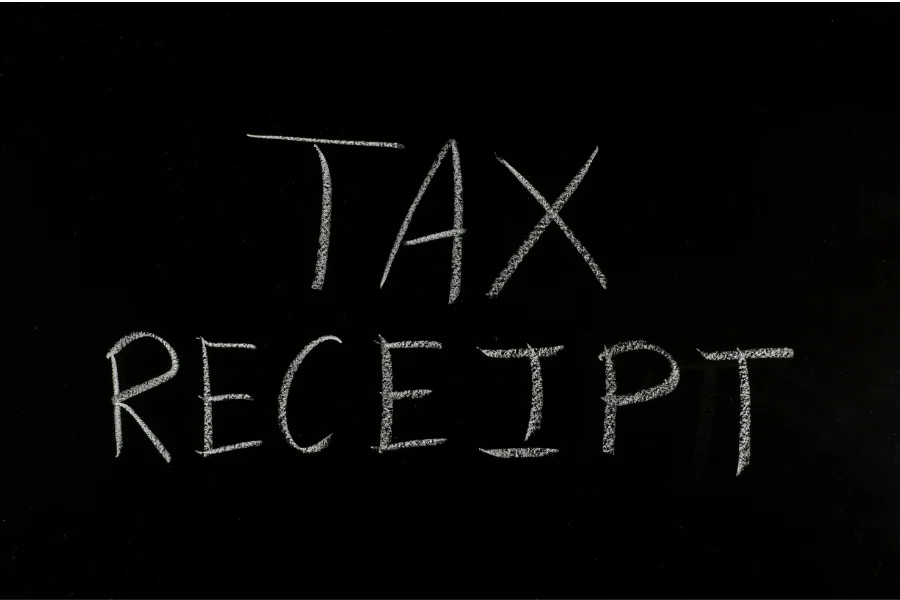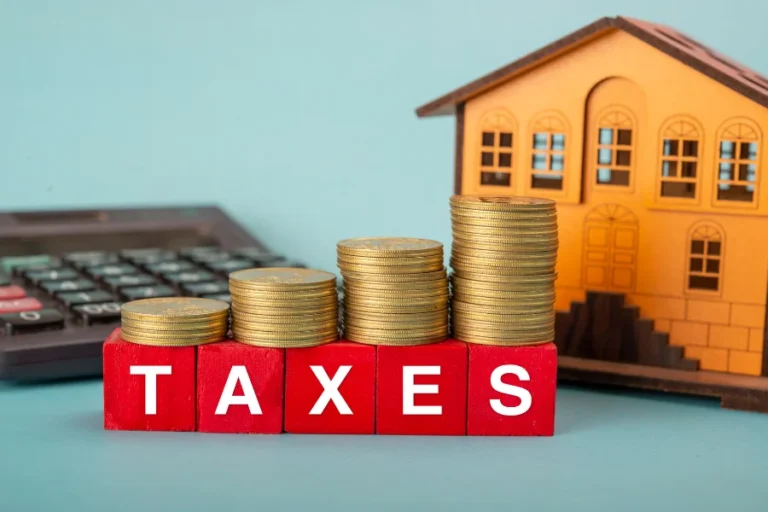Professional Tax Receipt [Simplifying Your Tax Obligations in 2025]
Your Professional Tax Receipt (PTR) is the key to unlocking your practice’s doors, ensuring compliance with local laws as you begin your professional career.
You’ve worked hard to perfect your skills and earn your licenses, but now it’s imperative that you understand the subtleties of your profession’s bureaucracy.
In order to obtain and renew your PTR, you must navigate the complicated process that, if ignored, can result in complications and hamper your ability to work. Remember that your professional credentials and dedication will be validated by your PTR.
Throughout this guide, we’ll explain the nuances of staying compliant, how to avoid potential pitfalls, and how to effortlessly manage this aspect of your career.
The key takeaways
- A Professional Tax Receipt (PTR) confirms professional licensure and confirms tax payment.
- PRC IDs are required for the first PTR and for renewing the previous PTR for registered professionals.
- Payment of the PTR fee is due on January 31 each year, and the cap is PHP 300.
- It is crucial to have a PTR number when filing income tax returns and doing business with the government.

Professional Tax Receipts: An Overview
Professional Tax Receipts (PTR) are both proof of tax payment and confirmations of professional licensing under the Local Government Code, so we must fully understand their concept.
The PTR is mandatory for all registered professionals, regardless of whether they are under the Professional Regulation Commission (PRC) or the Integrated Bar of the Philippines (IBP).
Using this document, you can prove that you have complied with your professional tax obligations.
When you apply for your first PTR, you’ll need to provide a valid PRC ID. When you renew, you’ll need to submit your previous PTR.
You don’t need to worry about the cost, it’s capped at PHP 300 per year. If you miss the deadline, you’ll incur penalties, interest, and surcharges.
PTR numbers are crucial because they are unique identifiers of tax payments and are often needed when filing income tax returns and dealing with government agencies.
The PTR will ensure you remain compliant and can practice your profession without hassle, regardless of whether you pay online or offline.
Can I freelance without a PTR?
Generally, if you are engaged in a line of work that is regulated by the Professional Regulation Commission1, you must have a Professional Tax Receipt. A wide range of professions are covered by this, including medicine, engineering, and financial services.
PTR stands for Professional Tax Receipt while OTR stands for Occupational Tax Receipt. The two documents sound quite similar and can be confusing. People working as freelancers in industries that are not regulated or licensed use OTRs.
Can you explain what the Professional Tax Receipt (PTR) requirements are?
Depending on your type of work, you may need a Professional Tax Receipt.
Your Professional Regulation Commission ID is the most important document you’ll need to prove you’re licensed for your particular profession. In most cases, you will have to go to your City Hall or Municipal Hall to pay your fee and get your PTR. Online applications are sometimes possible but aren’t always available.
Professional Tax Receipts: Where to get them
Where to get your PTR will depend on where you live. It’s possible to make a PTR online application in some places – but as the process is administered locally this isn’t always available. Check if you can apply for your PTR using the Electronic Business Permitting and Licensing System (eBPLS). If this is possible, you can apply and pay online by creating an account with eBPLS.
In the event that you are unable to obtain your PRT online, you will have to go to your City Hall or Municipal Hall to complete the application process. It may be possible to have an agent complete the application for you in person, as long as you authorize them to do so. You will need to determine your options according to your location, however, since the process varies.
What you need to do to get your Professional Tax Receipt
You should follow these basic steps:
- Contact your city hall or municipal hall to find out which office you need to visit to make a PTR payment
- You will need to fill out the PTR form from the clerk
- Give your completed form and your Professional Regulation Commission ID, as well as any other documentation you will need to provide based on your type of work.
- There is usually a fee of no more than 300 PHP at the cashier, but it does vary from place to place
Registration for the Professional Tax Receipt (PTR) online
You can generally register for your PTR online if your city or municipality has an Electronic Business Permit and Licensing System (eBPLS):
- The EBPLS (Electronic Business Permitting and Licensing System) website for your state can be found here.
- Register or log in if you already have an account
- Fill out the online registration form following the prompts after selecting the online PTR registration option
- You will need to upload your PRC ID and any other documents required by your profession
- Depending on the location, you might be able to make a bank transfer or use a credit card to pay
- Your application must be approved before you can print off your PTR for your records once it has been approved
Qualifications for obtaining a PTR
A Professional Tax Receipt is available only to professionals registered with the PRC or practicing lawyers affiliated with the IBP.
You must provide this document as proof that you have paid the professional tax on an annual basis.
To find out if you are eligible and what the application process entails, read on:
- Your PRC ID or certificate must be valid proof of your professional status, if you are a registered professional.
- For renewal applicants, bring your previous PTR. You will need organized records for a smooth process.
- To avoid late fees, you must pay the PTR fee by January 31 in order to avoid the fee going up.
- PTR is a document that confirms your payment as well as acts as proof of your license. Make sure your accounting records your PTR number.
It is crucial that you keep track of your professional tax obligations and file your PTR on a timely basis.
Maintaining your good standing and being available for business is a small yet significant step.
Also check: Travel Tax in the Philippines
A step-by-step guide to procurement
Procurement requires a sequence of distinct steps, beginning with identifying your organization’s requirements.
When you prepare detailed specifications, the next critical step, you’ll need to pinpoint precisely what your business needs.
The right specifications will help you attract suppliers who can fulfill your needs.
Your next step will be to select suppliers, where you’ll determine which vendors are capable of fulfilling your specifications and which are reliable and cost-effective.
Finding the right price-quality balance is key.
After you’ve shortlisted your suppliers, you’ll need to negotiate contracts. Here, you’ll discuss delivery schedules, payment terms, and other important details.
The goal is not just to get the lowest price, it’s also to ensure value and to maintain a good supplier relationship.
Your professional tax payment obligations will require you to juggle compliance with legal requirements throughout this process. It is essential to remember these to avoid any legal issues later.
The cost of acquiring a PTR
It costs less than PHP 300 to obtain a Professional Tax Receipt (PTR), a nominal fee that maintains your legal status as a professional.
Maintaining compliance with tax regulations and maintaining your ability to provide services without interruptions requires this small investment.
In order to acquire and maintain your PTR, here are the costs and implications:
- Your annual PTR fee is PHP 300. It is standardized and applies to all professionals.
- The consequences of late payments include penalties, interest, and surcharges, which add to your costs.
- You can avoid these charges by renewing your PTR annually. It’s a simple step that will save you money.
- You should include your PTR number in all important documents. It serves as a mark of professionalism and tax compliance.
To avoid extra expenses and to maintain your ability to practice your profession, make sure you pay your Professional Tax Receipt fee on time.
Keeping track of deadlines and staying abreast of tax regulation changes will help you to meet your PTR obligations.
Regulations pertaining to PTR compliance
It is crucial that you pay your professional taxes on time and keep accurate records of these transactions in order to remain in good standing.
Professionals should adhere to PTR regulations not only to meet their financial obligations, but also to maintain their practice integrity.
It is a good idea to keep your PTR up-to-date every year and follow the specific deadlines put forth by the authorities. By doing so, you will ensure that you are compliant as well as avoid unnecessary penalties.
You must keep accurate records of your professional tax payments in order to demonstrate your financial responsibility.
Whenever you have questions or concerns regarding PTR regulations, don’t hesitate to seek professional advice. An expert can help you navigate the complexities of compliance.
The last thing you should do is stay on top of any updates to PTR regulations. Laws and requirements can change at any time, and it’s your responsibility to stay up-to-date.
Making necessary adjustments to your practice and operating within the legal framework is possible by checking for updates.
Complying with regulations isn’t a one-time event, it’s an ongoing process that requires your attention.
Conclusion
Now that you’ve figured out the PTR maze, utilize it as the golden key to unlock your professional potential, just like the sun.
To avoid penalties that lurk like shadows, renew your license yearly by January 31.
As a dedicated professional, this receipt is more than just a receipt.
Keep it current, and let your practice shine without interference from bureaucracy.



![Real Property Tax in the Philippines [Calculate Easily in 2025]](https://taxcalculatorphilippines.org/wp-content/uploads/2025/08/Real-Property-Tax-in-the-Philippines-768x512.webp)

